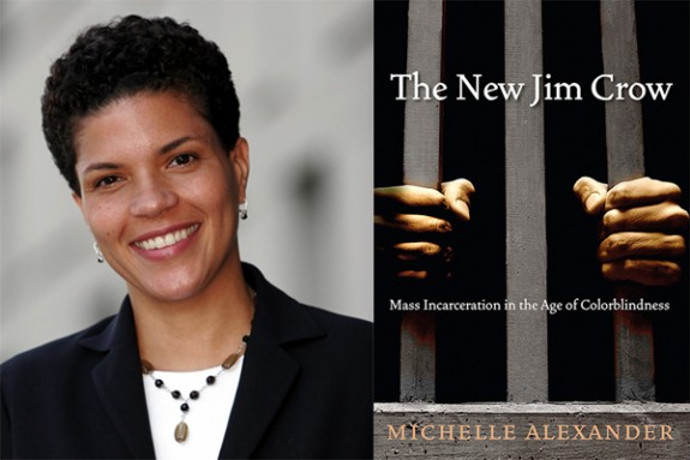I’ll admit, when I first heard the title of this best-selling book, I, as a black man, was taken aback. I scoffed at the notion that anyone could attempt to make a sound case for comparing the atrocious Jim Crow segregation laws of the 50s and 60s with today’s – albeit egregious – system of mass incarceration . . . and then she did it!
Michelle Alexander, a civil rights attorney and law professor at Ohio State University, starts from the beginning by illustrating the political and economic motivations by those in power to exploit and subjugate blacks and poor people from seventeenth century North American slavery to twenty-first century mass incarceration. She makes this provocative case by providing compelling evidence through a social and historical narrative that is driven by greed, political power, and economic advantage. If I were a skeptic, her book would at the very least cause me to pause and reconsider my position. Alexander argues her stance as though she were a seasoned lawyer (which she is) presenting her case to a biased jury that she knew would not see it her way unless she presented a masterful argument to win them over — and she does.
Professor Alexander refuses to allow her political persuasion (which I still don’t know) to interfere with her assessment of our broken criminal justice system and its treatment of minorities and poor white people. She equally criticizes Republicans and Democrats for their promotion through propaganda and funding of bad policy that are responsible for creating the highest per capita rate of incarceration among its citizens of any country in the world. She highlights the shrewd political expedience used by Ronald Reagan and Bill Clinton to propagate the “necessity” to fund the War on Drugs and later devise, state by state, sweeping mandatory minimum sentencing laws, respectively — which are both underlying policies resulting in over 2.2 million people currently incarcerated. She is unapologetically critical of the policies of other presidential administrations, including our current one (which was, frankly, somewhat surprising as she is a black woman), pointing out how they have been led by special interest groups and the big business of building more prisons with the hope of garnering more votes during election cycles.
I found The New Jim Crow to be both incredibly insightful yet profoundly disheartening. It bears the naked ugly truth of America’s ongoing struggle to accept and treat groups of people as equal participants in our diverse society. This book forces its readers to view an insidious, corrupt system – which is driven by politics and money – that confines, disenfranchises, and discriminates against millions of its citizens through a more cynical lens; one that we thought we had moved on from since 1865. For anyone who is affected by or interested in understanding the many tenets that have shaped our system of mass incarceration, I strongly encourage you to read this book – then give it to ten friends to read!






0 Comments